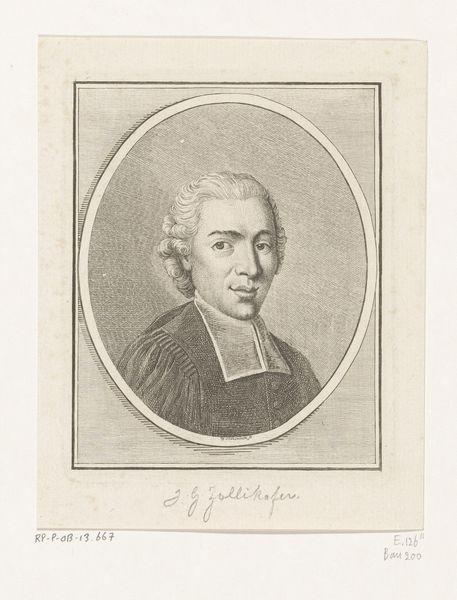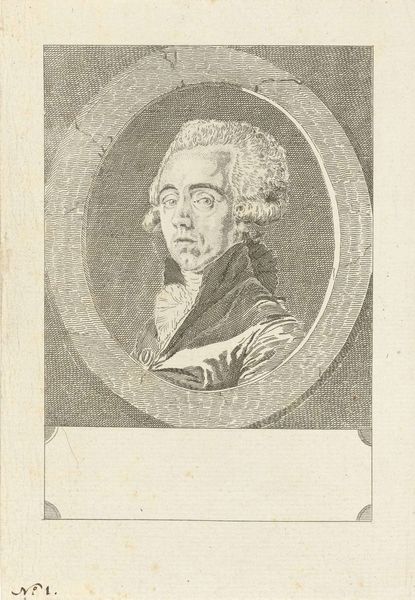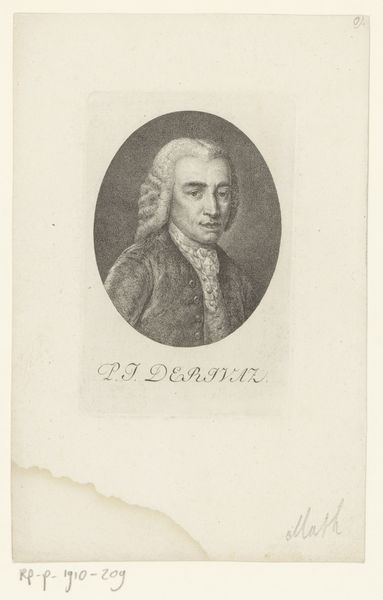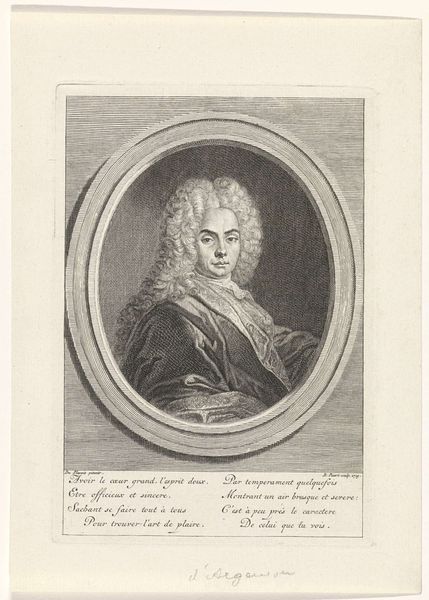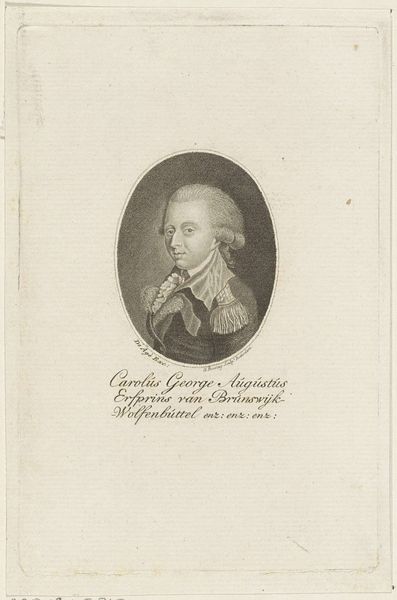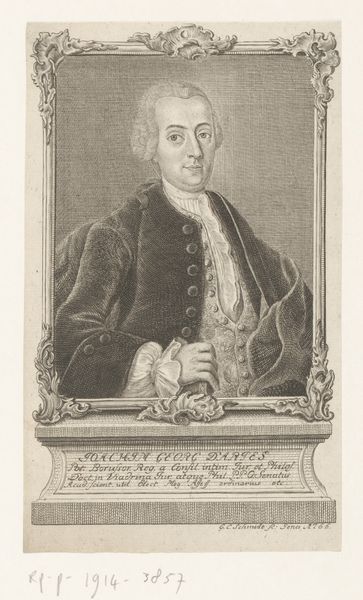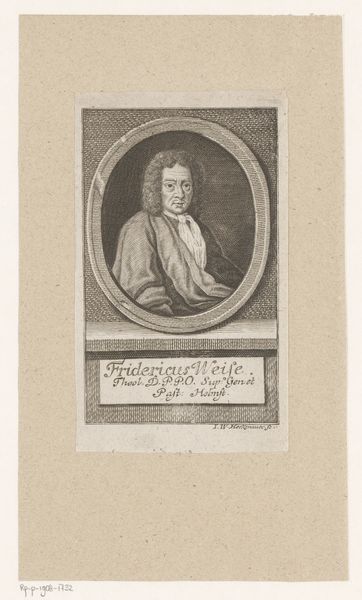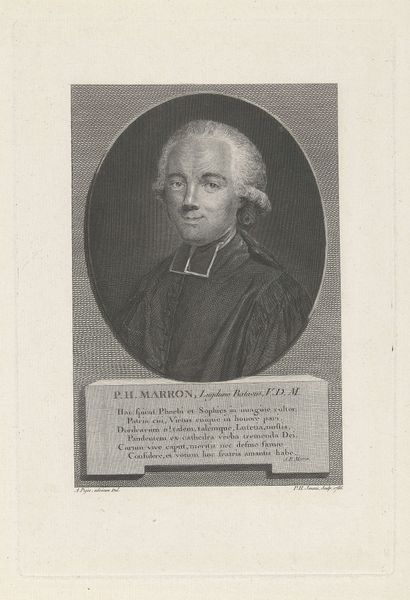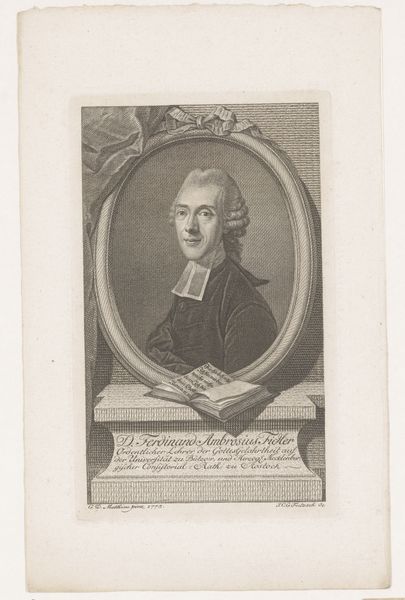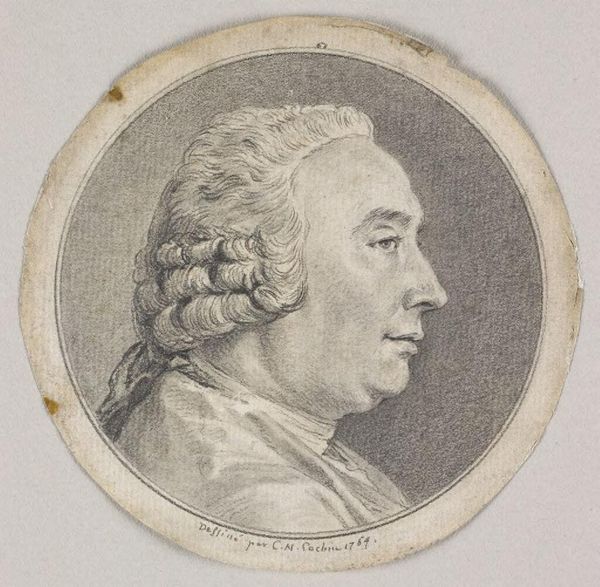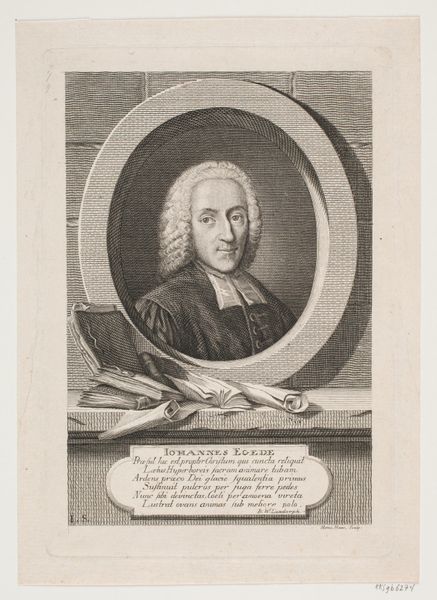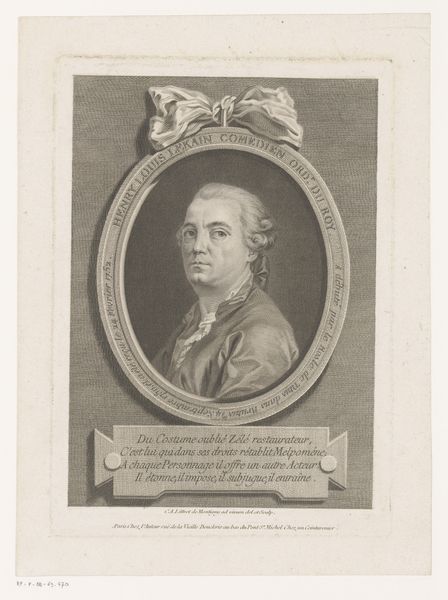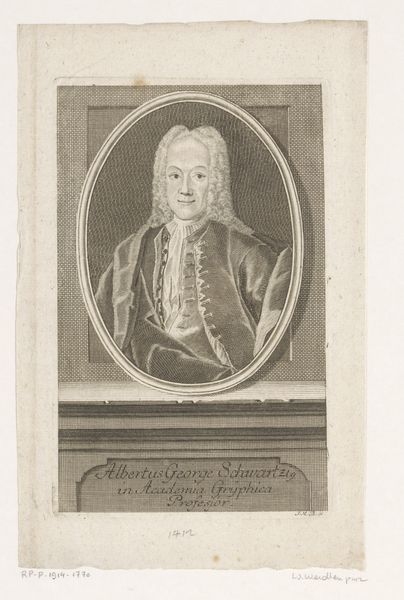
Dimensions: height 120 mm, width 95 mm
Copyright: Rijks Museum: Open Domain
Curator: This is a 1775 engraving by Daniel Nikolaus Chodowiecki, titled "Portret van Georg Joachim Zollikofer." It resides here at the Rijksmuseum. Editor: The subject has such a serene expression. The neat, repeating lines give it a certain calming formality, don’t you think? Almost like a classical sculpture rendered in print. Curator: It’s fascinating to consider portraiture's role in the late 18th century. Engravings like these democratized images, allowing for wider distribution of likenesses of prominent figures. How would people at the time have encountered or used this image, do you suppose? Editor: It would have functioned as a symbolic representation, an embodiment of authority or wisdom perhaps. Note the tight control of line and shadow – every detail conveys a very specific message about the sitter. It almost feels allegorical, as if Zollikofer is more of an archetype of pious learning than an individual person. Curator: Indeed. Zollikofer was a well-known reformed pastor and hymn writer. The engraving served a purpose, bolstering his public image and legacy in the circles he moved within. I think his stern, forward stare speaks volumes about his drive and faith. Editor: His garments amplify that! Those crisp white bands against the dark robe—very visually assertive symbols of his role. And his curled, powdered wig; an instantly recognizable indicator of his position. All designed, through these pictorial codes, to signal virtue and leadership. Curator: Absolutely. And it underscores how images played a part in reinforcing the social order. What are we to make of Chodowiecki, the artist, in his act of capturing such images? Is he merely reflecting the image he has been contracted to recreate, or adding to this understanding? Editor: That’s a good question, isn’t it? I find myself thinking about what this engraving meant within Chodowiecki's own visual lexicon. There is always tension in how artists participate in representing social structures, by either reinforcing or subtly questioning them. Curator: A really valuable insight. These printed images speak far beyond the mere likeness of a person. They reflect a complex web of social, cultural, and political meanings. Editor: Precisely. They act as a form of visual memory, preserving ideals and reminding us how symbolism permeates even the most seemingly straightforward portraits.
Comments
No comments
Be the first to comment and join the conversation on the ultimate creative platform.
